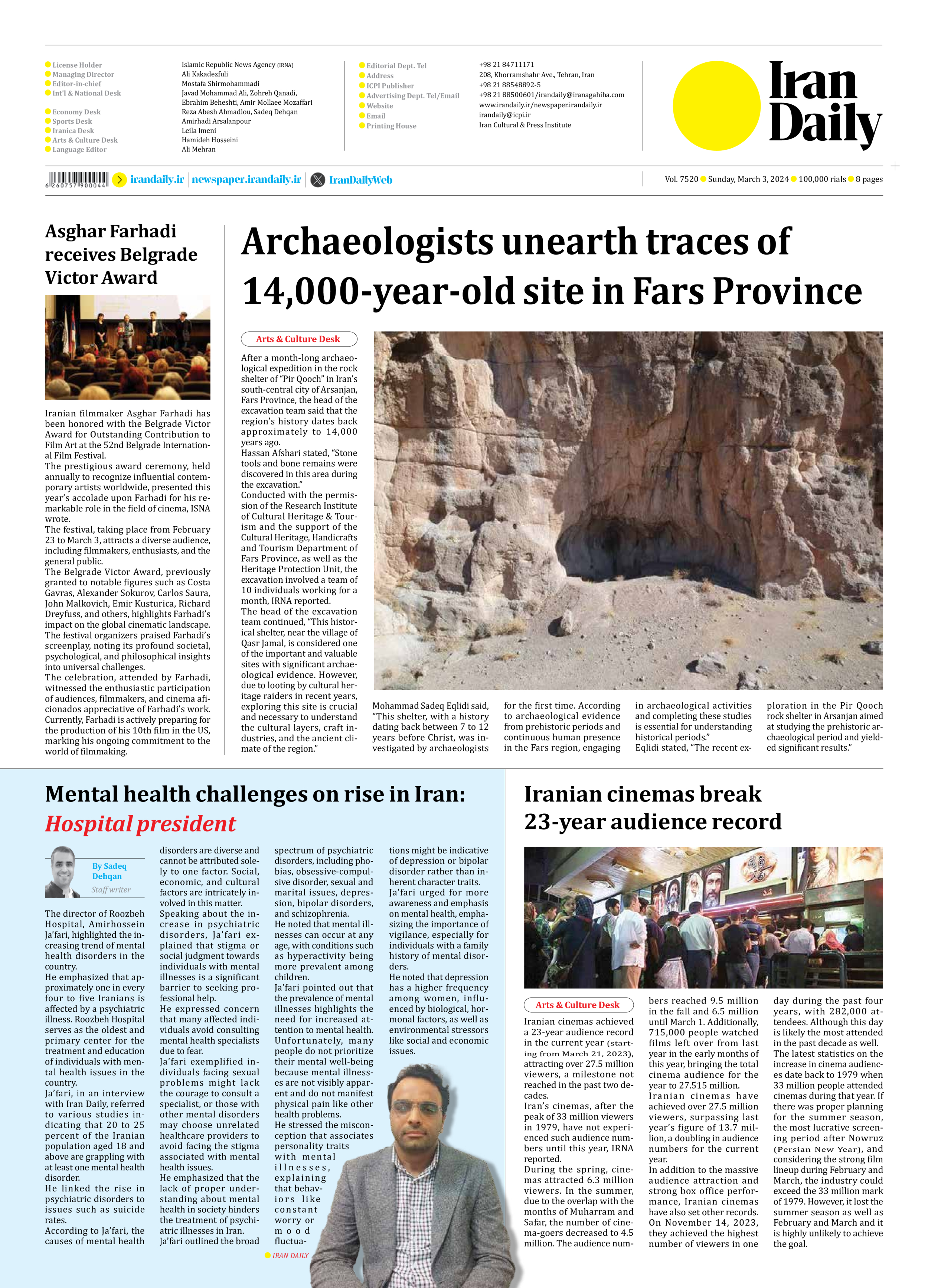
Archaeologists unearth traces of 14,000-year-old site in Fars Province
After a month-long archaeological expedition in the rock shelter of “Pir Qooch” in Iran’s south-central city of Arsanjan, Fars Province, the head of the excavation team said that the region’s history dates back approximately to 14,000 years ago.
Hassan Afshari stated, “Stone tools and bone remains were discovered in this area during the excavation.”
Conducted with the permission of the Research Institute of Cultural Heritage & Tourism and the support of the Cultural Heritage, Handicrafts and Tourism Department of Fars Province, as well as the Heritage Protection Unit, the excavation involved a team of 10 individuals working for a month, IRNA reported.
The head of the excavation team continued, “This historical shelter, near the village of Qasr Jamal, is considered one of the important and valuable sites with significant archaeological evidence. However, due to looting by cultural heritage raiders in recent years, exploring this site is crucial and necessary to understand the cultural layers, craft industries, and the ancient climate of the region.”
Mohammad Sadeq Eqlidi said, “This shelter, with a history dating back between 7 to 12 years before Christ, was investigated by archaeologists for the first time. According to archaeological evidence from prehistoric periods and continuous human presence in the Fars region, engaging in archaeological activities and completing these studies is essential for understanding historical periods.”
Eqlidi stated, “The recent exploration in the Pir Qooch rock shelter in Arsanjan aimed at studying the prehistoric archaeological period and yielded significant results.”







